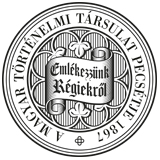Századok – 2011
KÖZLEMÉNYEK BETHLEN GÁBORRÓL - Oborni Teréz: Bethlen Gábor és a nagyszombati szerződés (1615) IV/877
914 OBORNI TERÉZ Báthory Gábor erőszakos eltávolítása, a törökök bejövetele és katonai jelenléte Erdélyben, valamint az általuk behozott új fejedelem személye új veszélyhelyzetet jelentett a Magyar Királyság és a bécsi Habsburg-udvar politikai vezetése számára. Bethlen fejedelemségét a Hofburgh&xi nem ismerték el, az oszmánok kormányzójának tartották, és katonai fellépést fontolgattak ellene, a magyar, az örökös tartományi és a birodalmi rendek támogatásával, remélve, hogy ily módon a Partiumot, sőt talán még Erdélyt is sikerül „kimenteni" az oszmán uralom alól. Bethlen Gábor trónra lépte után azonnal igyekezett felvenni a diplomáciai kapcsolatot a magyar királlyal, hiszen elődei példájából is jól tudta, hogy uralmát a szultán támogatása mellett a másik birodalom, a Habsburg Monarchia uralkodójával is el kell fogadtatnia. A sok nehézséggel és nézetkülönbséggel járó két éves tárgyalássorozat eredményeképpen született meg 1615. május 6-án a nagyszombati megállapodás. Ez egyrészt lecsendesítette a határ mentén addig dúló katonai-politikai viszályokat, és ezzel elhárította egy nagyobb fegyveres összecsapás veszélyét, másrészt egy időre, egészen Bethlen Gábor 1619. évi Habsburg-ellenes támadásáig, meghatározta Erdély és a Magyar Királyság közjogi viszonyát. Bethlen a szerződés titkos megállapodásának pontjaiban elfogadta azt az — először az 1570. évi speyeri szerződésben megfogalmazott, de fejedelemelődei által ugyancsak titkos szerződésekben több alkalommal elfogadott — közjogi elvi alapot, miszerint Erdély a Magyar Korona tagja (membrum), fejedelme pedig a terület fölötti uralmat a magyar király jóváhagyásával bírja. GÁBOR BETHLEN AND THE TREATY OF NAGYSZOMBAT (1615) by Teréz Oborni (Summary) The election of Gábor Bethlen as prince of Transylvania and his investiture in the autumn of 1613 involved much stronger Ottoman support than any similar act before. The violent removal of the previous prince, Gábor Báthory, the arrival of the Ottomans to Transylvania and their military presence there, and the person of the new prince taken by them, presented a new situatition of imminent danger for the Kingdom of Hungary and the political leadership of the Habsburg court at Vienna. Bethlen's principality was not recognised by the Hofburg, he was simply regarded as an Ottoman governor, and even a military campaign was contemplated against him with the support of the Hungarian and imperial estates, thereby hoping to „rescue" the Partium, and hopefully also Transylvania, from Ottoman domination. Gábor Bethlen made efforts at establishing a diplomatic relationship with the king of Hungary immediately after his accession, for he was as aware as his predecessors that, alongside the support of the Sultan, he should also gain recognition from the ruler of the other empire, the head of the Habsburg Monarchy. It was at the end of a difficult and conflict-ridden series of negotiations that the treaty of Nagyszombat was signed on 6 May 1615. This put an end to the military and political hostilities which had thus far torn the regions along the frontier, and thereby averted the outbreak of a major armed conflict. On the other hand, it determined the legal relationship between Transylvania and the Kingdom of Hungary until the anti-Habsburg campaign of Bethlen in 1619. In the secret agreement attached to the treaty Bethlen accepted the legal arrangement, first set out in the treaty of Speyer in 1570, and subsequently confirmed by the princely predecessors of Bethlen several times, according to which Transylvania was a member (membrum ) of the Hungarian Crown, and her prince exerted his authority there with the approval of the Hungarian king.
